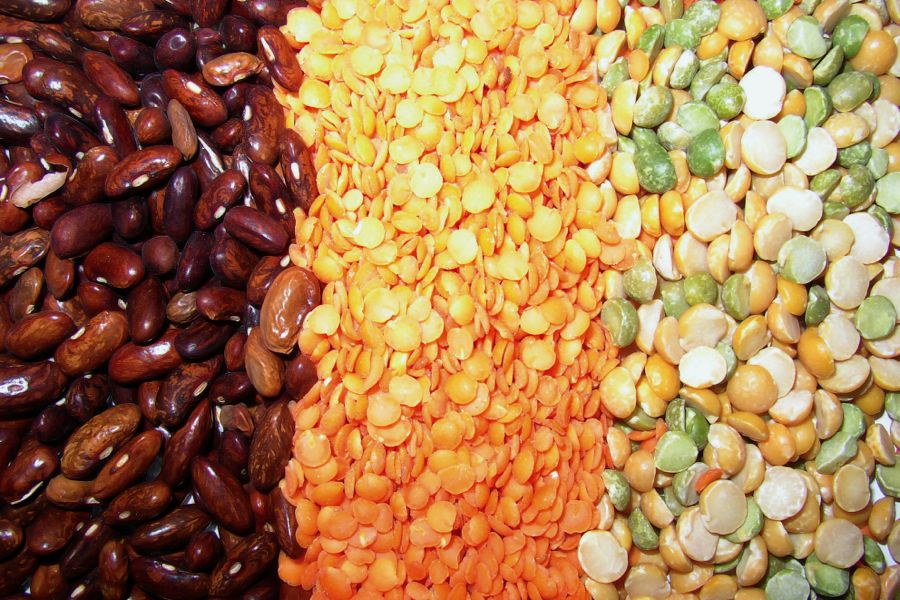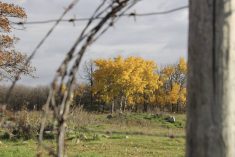New dicamba- and glyphosate-tolerant soybeans offer more weed control options and are another tool to address herbicide-tolerant weeds, but farmers need to take steps to avoid dicamba drift and spray tank residue, Manitoba officials say.
What’s been happening in Arkansas underscores the risk dicamba drift presents. The U.S. state of Arkansas on Friday announced a 120-day ban on the use and sale of dicamba in the wake of 550 drift complaints this season.
And last year an altercation between two farmers over drift escalated to the alleged shooting and death of 55-year-old farmer Mike Wallace of Monette, in the state’s northeast.
The Arkansas Legislative Council had already approved an emergency rule allowing fines of up to US$25,000 for “egregious” misuse of dicamba.
“Dicamba drift damage can occur at low doses,” Terry Buss, a provincial farm production extension specialist for pulses, said in an interview Wednesday during Manitoba Agriculture and the University of Manitoba’s Crop Diagnostic School at the university’s Carman research station.
Roundup Ready 2 Xtend Soybeans, which can tolerate the herbicides glyphosate and dicamba, were made commercially available to Manitoba farmers for the first time this spring.
Dicamba, a group 4 herbicide, is more volatile than some other weedkillers, provincial weed specialist Jeanette Gaultier said in an interview Friday.
However, two less volatile dicamba formulations — BASF’s Engenia and Monsanto’s Xtendimax with VaporGrip Technology — are available.
Dicamba drift can be further reduced by applying it before crops emerge, increasing droplet size, spraying when winds are light and keeping sprayer speeds down.
Read Also

Pulse Weekly: AAFC forecast stands pat
There were no changes to the pulse numbers for 2025/26 in the October supply and demand report from Agriculture and Agri-Food Canada on Oct. 17. So far it has translated into Western Canadian pulse prices holding steady.
Monsanto Canada spokeswoman Trish Jordan said Arkansas is an anomaly.
“What we’ve seen so far is the vast majority of farmers and applicators using our products are seeing great results, both from a weed control and efficacy standpoint, as well as the application itself and the products staying put,” Jordan said in an email Friday. “So we feel really good about what we are seeing.”
Though Xtendimax has been approved by the U.S. Environmental Protection Agency, farmers in Arkansas don’t have access to it because the state government hasn’t approved it, Jordan said.
“Therefore they don’t have access to the formulation that is designed to go with the product, nor have any of their farmers had the benefit of education and training sessions like in other states.”
Dicamba drift complaints have also been filed in Tennessee, Missouri and Mississippi.
But Jordan said the number of complaints is normal, despite 25 million acres of Xtend soybeans and cotton planted in the U.S. this year.
“(W)e will continue to work with every farmer that’s purchased our technology… to have a positive experience,” she said.
Manitoba Agriculture has heard a few dicamba drift complaints, but the extent of damage isn’t known yet, Gaultier said.
She suspects warmer weather in the southern U.S. might be contributing to more problems there.
States such as Arkansas also have more dicamba-susceptible crops, while canola and wheat, Manitoba’s two biggest crops by acreage, are not injured by dicamba drift. However, Gaultier said, non-Xtend soybeans, edible beans, sunflowers, potatoes, tomatoes and peppers are.
Some of the problems with dicamba drift in the U.S. are the result of “rescue” treatments when both crops and weeds are well advanced, Buss said. Susceptible crops hit with dicamba entering the reproductive stage result in bigger yield losses because they don’t have time to recover, he said.
Although dicamba can be applied to Xtend soybeans from pre-emergence to early flowering, applying pre-emergence has a lot of advantages. For one, if your crop isn’t up, your neighbour’s might not be either, and can’t be damaged.
“Dicamba provides residual control for a short period of time,” Buss said.
Research has shown earlier weed control boosts crop yields.
Monsanto also recommends applying dicamba with nozzles that produce coarse to ultra-coarse droplets such as Turbo TeeJet Induction and Air Induction. Those nozzles require application rates of at least 10 gallons of water an acre.
Spraying should take place when wind speeds are three to 15 km/h and at sprayer travel speeds of no more than 24 km/h. Boom height should be no more than 50 cm, Monsanto says.
Farmers shouldn’t spray during inversions, or when wind conditions are dead calm, Buss said. The spray might not penetrate the crop canopy and could move to a neighbouring field.
“There is potential for a lot of drift damage if we are not doing things properly,” he said.
While widespread drift damage is unacceptable, Buss hopes Manitoba famers cut each other some slack where field edges meet.
“I think people are going to have to be reasonable… because it could be you causing the damage next year,” he said.
“I don’t think we saw as much of the minor drift that was going on and now we are going to be more aware of it.”
Farmers and their employees should also pay more attention to what they and their neighbours are growing to avoid not only drift, but spraying the wrong field, Buss said.
Cleaning all the dicamba out of a spray tank isn’t hard, but critical.
“Eight ounces of dicamba solution — not the concentrated product, but the solution left in a big sprayer filled up with something else — can cause (injury) symptoms,” Buss said.
“If you leave three gallons of solution in that sprayer… and then fill up and go spray something else susceptible you can actually cause yield loss.”
Monsanto recommends triple-rinsing sprayers after applying dicamba. The first rinse is with water. All filters and screens should cleaned with an ammonia- or detergent-based solution. The tank should get a similar solution and be agitated, then flushed. A third rinse, with water, should then follow.
— Allan Dawson is a reporter for the Manitoba Co-operator at Miami, Man. Follow him at @AllanReporter on Twitter.
















